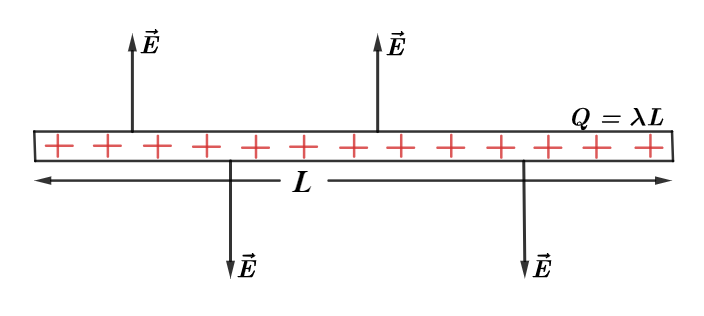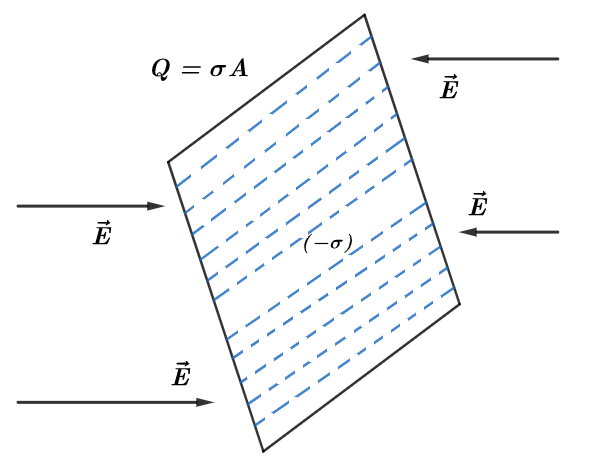
Define linear charge density and surface charge density at a point.
Answer
502.5k+ views
Hint: The charge density is a value of charge accumulation per unit length or a surface area or a volume. So the linear charge distribution shows how charges are distributed along a length. The surface charge distribution shows how charges are distributed across an area A.
Complete step by step solution:
As I mentioned in the hint, the charge density is the value of charged particles per unit length, surface area or volume, so we can consider it as a continuous charge distribution along a length, surface area or volume. The charge density will be the same for every point on a body having continuous charge distribution.
Linear charge density: Linear charge density at a point on a linear line of charge is defined as the charge distributed per unit length. We can define linear charge density as the ratio of a small charge

Given above is an example of positive linear charge density of a rod of length L whose linear charge density is expressed as
Surface charge density: Surface charge density at a point on a charged surface is defined as the charge distributed per unit area. We can define surface charge density as the ratio of a small charge

Given above is a negatively charged sheet of surface area A and a surface charge density of
Note::
(i)The surface charge density can be positive or negative depending on the charge distribution.
(ii)There is also volume charge density, which is defined as the charge distributed per unit volume. We can define volume charge density as the ratio of a small charge
(iii)Its unit is
Complete step by step solution:
As I mentioned in the hint, the charge density is the value of charged particles per unit length, surface area or volume, so we can consider it as a continuous charge distribution along a length, surface area or volume. The charge density will be the same for every point on a body having continuous charge distribution.
Linear charge density: Linear charge density at a point on a linear line of charge is defined as the charge distributed per unit length. We can define linear charge density as the ratio of a small charge

Given above is an example of positive linear charge density of a rod of length L whose linear charge density is expressed as
Surface charge density: Surface charge density at a point on a charged surface is defined as the charge distributed per unit area. We can define surface charge density as the ratio of a small charge

Given above is a negatively charged sheet of surface area A and a surface charge density of
Note::
(i)The surface charge density can be positive or negative depending on the charge distribution.
(ii)There is also volume charge density, which is defined as the charge distributed per unit volume. We can define volume charge density as the ratio of a small charge
(iii)Its unit is
Recently Updated Pages
Master Class 12 Business Studies: Engaging Questions & Answers for Success

Master Class 12 English: Engaging Questions & Answers for Success

Master Class 12 Social Science: Engaging Questions & Answers for Success

Master Class 12 Chemistry: Engaging Questions & Answers for Success

Class 12 Question and Answer - Your Ultimate Solutions Guide

Master Class 12 Economics: Engaging Questions & Answers for Success

Trending doubts
Give 10 examples of unisexual and bisexual flowers

Draw a labelled sketch of the human eye class 12 physics CBSE

Differentiate between homogeneous and heterogeneous class 12 chemistry CBSE

Write a short note on Franklands reaction class 12 chemistry CBSE

Differentiate between insitu conservation and exsitu class 12 biology CBSE

What are the major means of transport Explain each class 12 social science CBSE




